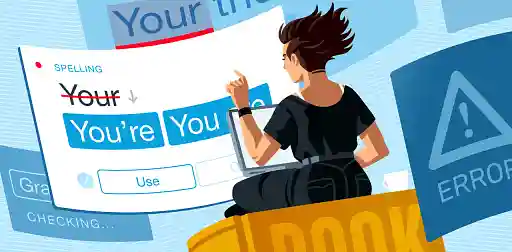Posted on Jun 05, 2024
How to Write an Autobiography: The Story of Your Life
Savannah Cordova
Savannah is a senior editor with Reedsy and a published writer whose work has appeared on Slate, Kirkus, and BookTrib. Her short fiction has appeared in the Owl Canyon Press anthology, "No Bars and a Dead Battery".
View profile →Dario Villirilli
Editor-in-Chief of the Reedsy blog, Dario is a graduate of Mälardalen University. As a freelance writer, he has written for many esteemed outlets aimed at writers. A traveler at heart, he can be found roaming the world and working from his laptop.
View profile →Anyone who’s lived a long, interesting life (as many of us have in one way or another!) may dream of someday turning their life into a book. However, the practicalities of how to write an autobiography can be daunting — especially to those who don’t have much writing experience.
If you feel ready to write your autobiography but aren’t sure where to start, this guide will take you from opening lines to (hopefully) publishing your autobiography for all the world to read.
1. Understand what an autobiography entails
When asked to picture an autobiography, you might think of a celebrity tell-all or political memoir. This isn’t inaccurate; a memoir would definitely fall under the autobiography umbrella. But to be really precise, there are a few key differences between memoirs and autobiographies:
- Memoirs tend to be more thematic and focus on a central narrative (similar to a novel), whereas an autobiography is highly factual and reads more like “classic” nonfiction.
- Memoirs focus on a specific period or theme in a person’s life, while autobiographies aim to give a complete, chronological picture.
- Lastly, many memoirs are written while the writer is still young. An autobiography, though, should be written later in one’s life — at a point where one’s life story can be told comprehensively.
An autobiography is also different from a biography in that it is always narrated by the subject. Note that we’ve said “narrated” instead of “written” because, indeed, many autobiographies are created with the help of ghostwriters!
Ghostwritten autobiographies aren’t just for celebrities, either. People from all walks of life work with ghostwriters to record their stories or simply guide them through the process.
If that sounds like you, have a look through our vetted ghostwriters on the Reedsy marketplace. You might just find your dream collaborator!
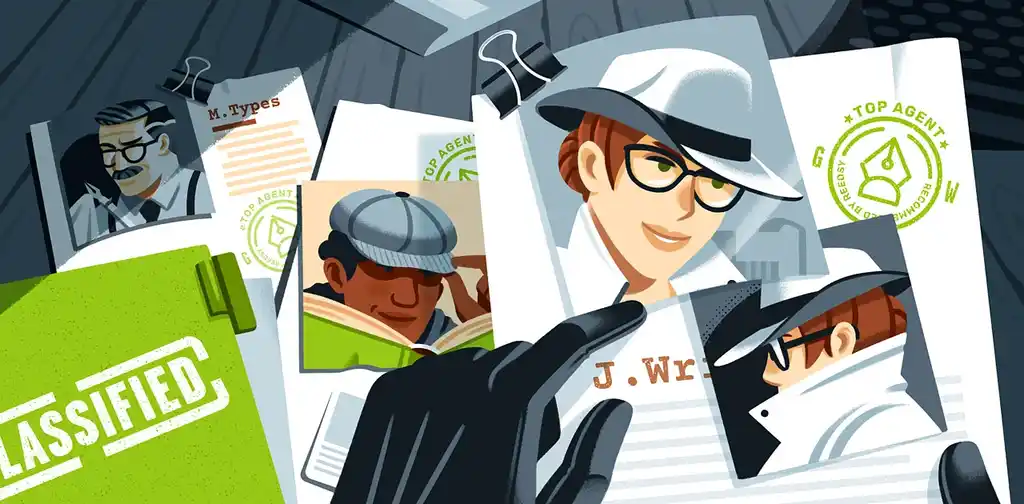
MEET GHOSTWRITERS
Find a ghost you can trust
Your mission? A fantastic book. Find the perfect writer to complete it on Reedsy.
Should you write a memoir or an autobiography?
In other words, if you’re still young (be honest here!), and/or if the book you want to write is more a series of vignettes revolving around a central theme, you may have a memoir on your hands. If that’s the case, check out our guide to how to write a memoir for more tailored advice.
But if you’ve already lived a long, interesting life — one that you feel prepared to share chronologically and completely — then an autobiography is the medium for you.
2. Outline your life's main “beats”
You might think you don’t need to be too picky about what to include in your autobiography since it’s supposed to be a “complete” account — and you’d be mostly right! That said, even in a fairly exhaustive autobiography, it’s still useful to identify the key “beats” before you begin.
What should you include in an autobiography?
While each person’s autobiography will be unique to them, readers expect certain “beats” to be covered. To get the ball rolling, here’s a list of classic autobiographical beats to hit:
- 🐣 Your birth and family background – possibly including how your parents met, where they were living at the time of your birth, whether you have any siblings, etc.
- 📚 Your early days at school – including the friends you made (whether long-lasting or not), your academic achievements (and failures), and any critical moments related to your future goals/actions.
- 🧑🏽💻 Your first job – this is often enlightening for readers, particularly if it had some bearing on your later career; whether because you realized that you loved the work or, more likely, that you didn’t want to work your first job forever.
- 👩❤️💋👩 Your first relationship – similar to your first job, this is often a major stepping stone into adulthood and understanding your priorities.
- 🏡 Any further family, career, or life milestones – speaking of which, after all the “first time” beats, it’s up to you to decide what to include! A few ideas here could be:
-
- Moving house;
- Having children;
- Getting promoted;
- Receiving an award;
- Traveling somewhere new;
- Or discovering anything significant about yourself.
-
- 💼 Your retirement – if applicable, this will likely be one of the last beats you cover; it might include why you decided to retire, how you are spending your time nowadays, and any plans for the future.
Remember that each beat you include should contribute to a holistic portrait of your life — whether it’s something that shaped your character or lends context to another parallel moment later on.
But not everything will be relevant. There’s no need to include random things that have no bearing on any other event or important element of your life; that said, the lucky thing about memory is that you likely won’t recall most of those things anyway!
Need some help outlining your autobiography? Check out our Biography Outline Template below — while not entirely chronological, it’s a great starting point for any aspiring autobiographical author.
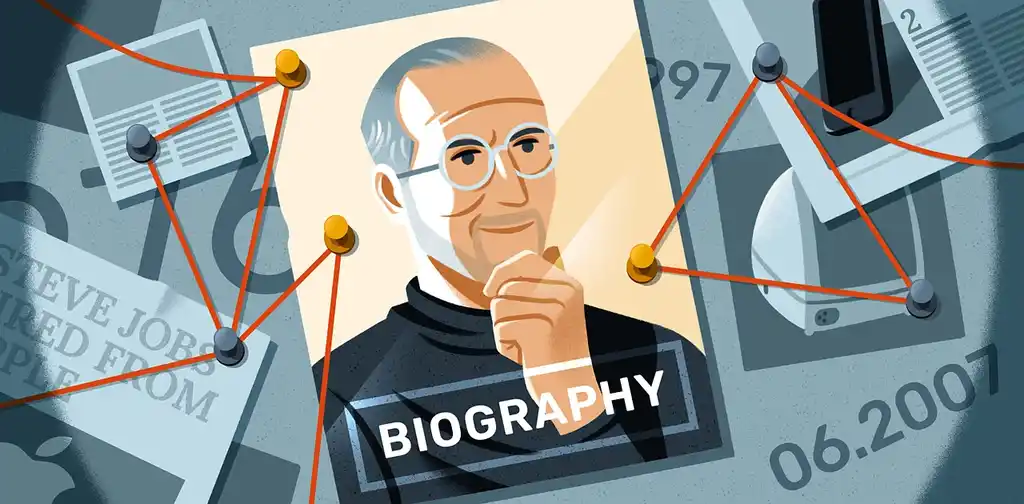
FREE RESOURCE
Biography Outline Template
Craft a satisfying story arc for your biography with our free template.
3. Try to write in chronological order
Having come up with a solid outline, you should now feel (somewhat) prepared to start writing your autobiography… and, ideally, to start writing it in chronological order.
While many books can be drafted non-chronologically, an autobiography is not one of them. This is because each new chapter quite literally builds on the last; this is different even from a memoir, which often skips around in time and leaves out details. The best way to ensure you’re not missing anything is to write your autobiography as chronologically as possible!
How to start an autobiography
On the note of starting your autobiography, it’s pretty straightforward: begin either with your birth or slightly before, e.g., with your parents. Unlike a memoir, which can start in medias res (in the middle of the action), an autobiography should start ab ovo, or “from the egg.”
This is one of the biggest benefits of writing chronologically: you always know where to start, and indeed, what should come next. Here are two strong autobiography openings to give a sense of how yours might sound:
I Am Malala by Malala Yousafzai and Christina Lamb
When I was born, people in our village commiserated with my mother and nobody congratulated my father. I arrived at dawn as the last star blinked out… I was a girl in a land where rifles are fired in celebration of a son, while daughters are hidden away behind a curtain, their role in life simply to prepare food and give birth to children.
Iacocca: An Autobiography by Lee Iacocca and William Novak:
Nicola Iacocca, my father, arrived in this country in 1902 at the age of twelve — poor, alone, and scared. He used to say the only thing he was sure of when he got here was that the world was round. And that was only because another Italian boy named Christopher Columbus had preceded him by 410 years, almost to the day.
Though each opening takes a different tack — Yousafzai’s autobiography begins with her actual birth, while Iacocca’s begins even earlier, with his father’s arrival in America — both serve as effective starts to their respective books and set the tone for what’s to come.

4. Include plenty of detail
In case we haven’t drilled down on this enough, let’s reiterate once more: an autobiography should be a complete overview of your life from beginning to end. That means that as you get into properly writing it, you should include as much detail as you can remember.
Taking one of our previous suggested beats — “your first job” — as an example, here are a few questions you might ask yourself to recount your memories in more detail:
- How did you get your first job?
- What made you want to work there?
- What was the environment/atmosphere like — physically and emotionally?
- What was your greatest accomplishment at this job? Your greatest failure?
- What did you learn from working there? How did it affect your later career?
As you can probably tell from these questions, the natural corollary to the advice of “be detailed!” is to also be honest. Don’t shy away from your failures or regrets — an autobiography without mistakes is not an autobiography, but rather a puff piece.

Examples of strong biographical detail
For those wondering how to inject detail into their writing, here are two examples from great autobiographies that do exactly that. Each takes a different approach to engage readers — perhaps you can pick up some descriptive techniques to suit your own life story.
Long Walk to Freedom by Nelson Mandela
There was no natural light in my cell; a single bulb burned overhead twenty-four hours a day. I did not have a wristwatch and I often thought it was the middle of the night when it was only late afternoon. I had nothing to read, nothing to write on or with, no one to talk to [...] After a time in solitary, I relished the company even of the insects in my cell, and found myself on the verge of initiating conversations with a cockroach.
This passage’s evocative details — the single lightbulb, Mandela’s loss of his internal clock — convey the crushing loneliness of solitary confinement, yet also add levity with the bit about cockroaches.
This give-and-take style may be useful if you, too, are writing an autobiography which includes difficult or traumatic elements. Don’t shy away from the hard parts, but don’t let solemnity overpower your personality and voice!
Becoming by Michelle Obama
When you’re little, a piano can look like it has a thousand keys. You’re staring at an expanse of black and white that stretches farther than two small arms can reach. [...] The keys on Robbie’s piano had a subtle unevenness of color and shape, places where bits of ivory had broken off over time, leaving them looking like a set of bad teeth.
This passage uses sensory details and an intimate tone to draw readers in, describing not just how the piano looks, but how it feels to play. All this makes for a very compelling narrative style — almost like that of a novel. If you want your autobiography to flow this way, try reading more nonfiction in this style (indeed, many memoirs read quite similarly).
Q: How might authors start an autobiography with a compelling hook?
Suggested answer
First, the autobiography should have a plot and a sense of the author changing over time as a good character would in a successful novel. And the core idea of that plot can be revealed from the earliest pages.
Not "I was born in Philadelphia in the spring of 1961."
But "I was born at Albert Einstein Hospital in Philadelphia the day Alan Shepard blasted off to become the first American in space, and I was named for him and John Glenn."
Both of these are potential openers for the autobiography of my husband, Glenn Alan, who became a physics professor and a space enthusiast.
Another effective opening can be a description of the time and place and family into which you were born or first experienced something appropriate for the plot line of the autobiography--when your lisp shamed you in first grade or when your life really began as you escaped your abusive home at sixteen.
And like the prologue of a novel, your opening scene could be a significant event from your adulthood, even very recent, with the rest of the autobiography then backtracking to earlier days.
Ask yourself if there's a scene from your life that sums up everything that led to a crucial decision, or when you finally basked in the glory you'd earned through much hardship and hard work. Consider pausing that scene at a crucial moment and then returning to it as the culmination of the autobiography as it closes.
Cindy is available to hire on Reedsy ⏺
Instead of beginning at the beginning, i.e. starting straight off with your childhood and parents etc., an interesting way to start is by describing a key event or experience in your life, and relating that directly or indirectly to your overall story. Then you can proceed to the usual chronological order of things.
This is quite a common approach used in recent decades for famous people's autobiographies. It grabs the reader's attention and encourages them to read further.
John is available to hire on Reedsy ⏺
I always tell my memoir authors that the most important water a memoir opening has to carry is to launch a charm offensive. Make friends with the reader. Make them laugh, make them sigh, make them cry, or gasp with surprise. Go for hearts and minds. Work the room. Establish trust. Be vulnerable, honest and generous. Be funny at your own expense.
A lot of editors and ghosts like to choose a climax scene to begin an autobiography. They will find a moment when lots of stuff is happening- - the storm clouds gather, the city explodes, the battle is won or lost, or the sun breaks through after a terrible storm. Then, they will jump back to the beginning of the story, and place that scene in context, explaining how we wound up in such a consequential and incendiary situation.
I myself think that voice and relationship building, and beautiful writing is more important than action in a memoir. Action is important, but it's secondary to voice and reflection. Proust wrote an entire autobiography about eating a Madeleine tea cake. And it wasn't a short book. So every story is different, and will open in a way that is organic to itself, but there are some good rules I've developed over the course of a lifetime crafting memoir, that I thought might be helpful to memoirists learning to master their craft.
7 Tips for a Dynamic Memoir Opening
- Explode on to the scene with action already in progress. Don't introduce or preface, just cannonball it right into the middle of the pool.
- Develop a personal, and conversational voice. The reader should feel like you are speaking right to them. Words should come up off the page, and soar straight into the heart or the gut
- Be vunerable and radically transparent, but always hold a litte something back. Maintain mystery.
- Set the scene. Ambient detail is critical in memoir opens. Where are you? What does it look like, smell like? feel like? What is the weather outside? How is the room furnished? Who else is there? Build a fully dimensional world so your reader can move right in.
- Make your big idea clear right at the top. Why should they read your story? What are they going to get out of this book? What is the ROI? What do you intend to teach them, and why?
- Weigh every word. Memoir is the most voice-driven of all nonfiction genres, and good style is critical. Avoid formality, but write evocatively, beautifully be funny, moving, poetic, enlightening, and aspirational. Find universally human lessons of your experience, and share those with the language they deserve.
- Write in real time. Let the action unfold as you lived it, so the reader can live it too. One of the great gifts of memoir is giving you the chance to live your past over again, only this time, with the benefit of hindsight.
Happy Writing
Bev is available to hire on Reedsy ⏺
5. Do research to fill in the gaps
No matter how carefully you rack your brains, you won’t be able to recall every detail of your life. That’s where research comes in! Here are a couple of things you can do to learn more about yourself and your past.
Interview friends and family
While you’ve likely retained the core of each important life memory, some details will still elude you. For these, you might call on friends, family members, and anyone else who was in your life at the time — interviewing them should help flesh things out in your autobiography.
You might try a few different interview strategies, depending on what you’re hoping to achieve:
- Ask specific questions based on what you can’t remember/don’t know (e.g. “Whose wedding was that again?” or “Why did Dad quit that job in Pasadena?”);
- Ask your subject to recount everything they can about an event (e.g. “Tell me how you remember our high school graduation”); or
- Ask them if they have any key memories of you which they would like to talk about.
The first interview style will be the quickest, but the latter two might yield more interesting results. If you’re prioritizing thoroughness, we’d highly recommend calling up a few old friends or close family members, sitting down, and recording your interview for a few hours.

Do “traditional" research if needed
Having written as much as you can, and interviewed other people to add their stories, you might still find yourself missing information. If applicable, this is where you could turn to “traditional” research — that is, looking up relevant records and documentation, or even taking a field trip or two to previous neighborhoods.
It’s up to you how far to go with this; just don’t go mad, and try to avoid any rabbit holes that tempt you to write an entirely new book. (Then again, that could always be your next project! Check out our post on how to write a nonfiction book to learn more.)
Q: What research methods help autobiography writers verify memories and fill gaps?
Suggested answer
Autobiographies/memoirs are a joy to research because you can get all of your information straight from the horse's mouth, so long as the horse is reliable. Also, you have to know the right questions to ask, and dig deeply for unvarnished and truthful answers.
Memoirs are about your world view, your personal impressions, your unique take on life, and what you have learned from your experience. There are no right or wrong answers in memoir, just your truth, as you have lived it and come to understand it. But that's the tricky part. What is your truth? What do you passionately want to say to the world, that will be there long after you are gone? What do you want future generations to understand about your brief sojourn on this planet?
When I am s working with authors on a memoir, I am always encouraging them to think differently, deeply, and comprehensively about the lessons of their experience. To stretch their imaginations, their visions of themselves, and to understand, perhaps in a new and fresh way, what their story has meant.
I've shared a few of the questions that I ask my clients to get them thinking in fresh and innovative ways about their own story, and I thought they might be helpful to share with all of you.
7 Questions to ask yourself When Researching Your Memoir
- What's the big idea? If you had to boil it down to an elevator pitch, what is your essential message to the world? Is there a theme? An overarching lesson? A motif? A distinct quality they all have in common?
- Teaching Moments: What were the milestone moments in your life that taught you an influential lesson that shaped your course? Do they have something in common? Do they all point to a common thread or theme?
- Cultural Context: What was happening in the larger world and in culture at the time your story is occurring? How does this intersect or impact your narrative?
- Mentors and Guides: Who were the people that influenced your path for better or worse? What words of their wisdom or words of criticism stuck with you and why?
- Radical Transparency: What are some of the things you would go back and do differently if you could? Do you have any regrets?
- Self Acknowledgement: What are some of the things you would not change if you had a chance to do it over again? Did you celebrate those victories in the moment, or only later once you understood their impact?
- Moral of the Story: What are the universal and aspirational lessons of your experience, the moral of the your story that applies to everyone, and can be helpful to your reader going forward?
Happy Writing!
Bev is available to hire on Reedsy ⏺
I would say location-based research is one of the most important. While we might remember general impressions about an area we lived in or visited, it's easy to forget names of places or their exact locations. Sometimes these places change names, or vanish altogether, and those are always interesting details to know.
Marisa is available to hire on Reedsy ⏺
Reading autobiographies of people in similar fields or with similar stories. But in general any autobiography can be helpful to read as research. It's important to know the plethora of ways you can approach writing about your own life. As far as personal research, once you set out to write your story, it could be helpful to spend a lot of time gathering important materials. It will be different for every book but things that come to mind are old family photos, journals and letters, family trees, and things like this to add color to your story and give you new ideas.
Josh is available to hire on Reedsy ⏺
6. Give your draft a discerning edit
You’ve finally finished a detailed draft — congratulations! Even if you don’t do anything else with your autobiography, your friends and family will be wildly impressed, and your descendants will have a fascinatingly thorough record of your life.
But if you want to publish your autobiography — or even if you suspect it hasn’t turned out quite as expected — you’ll now need to enter the editing stage. There are a few different types of editing to consider for your autobiography, including:
- Structural editing to heighten the impact of your key beats;
- Line editing to improve the syntax, flow, and clarity of your sentences; and
- Fact-checking and proofreading to ensure your book doesn’t contain any errors.
Again, it’s up to you how extensively you want to edit your autobiography. If you’re doing it yourself, we’d suggest going top-to-bottom — first structural editing, then line editing, then proofreading — to avoid unnecessary work. (Check out this post on how to self-edit your book for key tips!)
And if this all feels overwhelming, you can always work with a professional editor. Autobiography and memoir specialists can help turn your work into an Iacocca-worthy masterpiece, and hiring one will get your autobiography in tip-top shape.
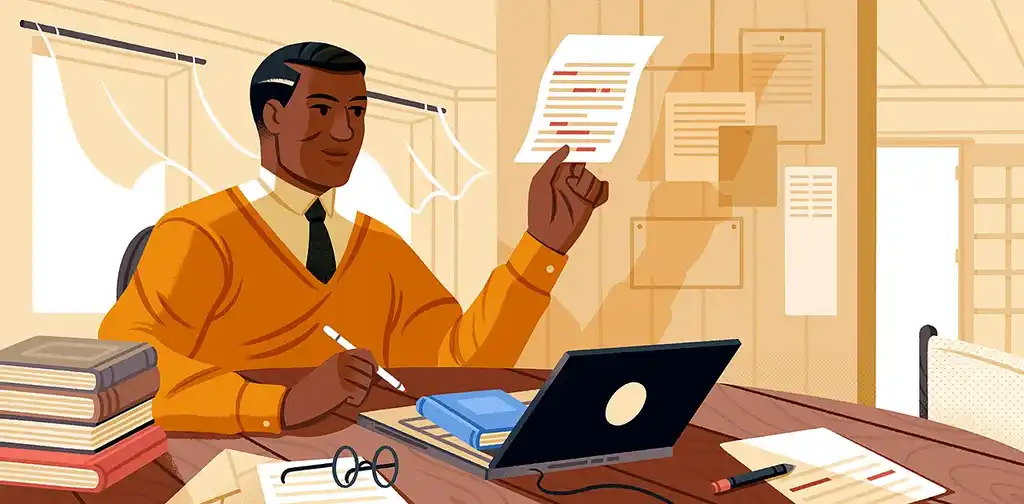
MEET EDITORS
Polish your book with expert help
Sign up, meet 1500+ experienced editors, and find your perfect match.
7. Format and publish your autobiography
Now comes the really fun part, if you so choose it — formatting and publishing your autobiography for everyone to read!
Biography fans out there will know that auto/biographies often contain a selection of personal photos within the text. If you’re envisioning this, it will require specialty formatting; you’ll either need to intersperse photos throughout the text or format your book with a “photo section” in the middle (the more common option).
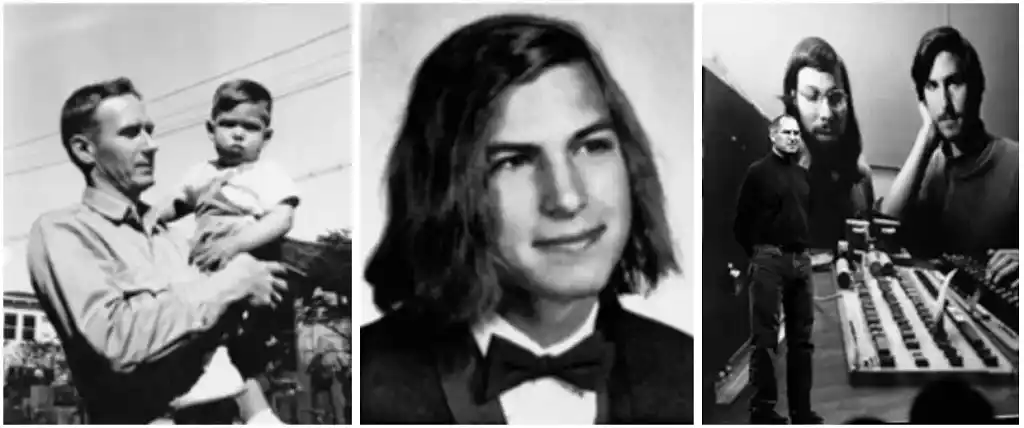
You can do this with free book formatting tools like Reedsy Studio. Or if you’re not confident in your formatting abilities, consider hiring a professional typesetter to help!
As for publishing, many autobiographers choose to self-publish their books to get them out as quickly as possible, and to have more control over the process. However, if you’re interested in selling your autobiography to a publisher — a reasonable option if you are a businessperson, and especially if you already have a decent following — we’d suggest this post on how to write a non-fiction query letter to get you started.
Whatever path you take, whether you decide to publish it or not, writing the story of your life is an incredibly enlightening endeavor. If you're interested in novels instead, check out this advice from NYT bestselling author Caroline Leavitt! We hope this guide has helped you on your journey; indeed, as autobiographical writing teaches us, the journey really is the greatest reward.

